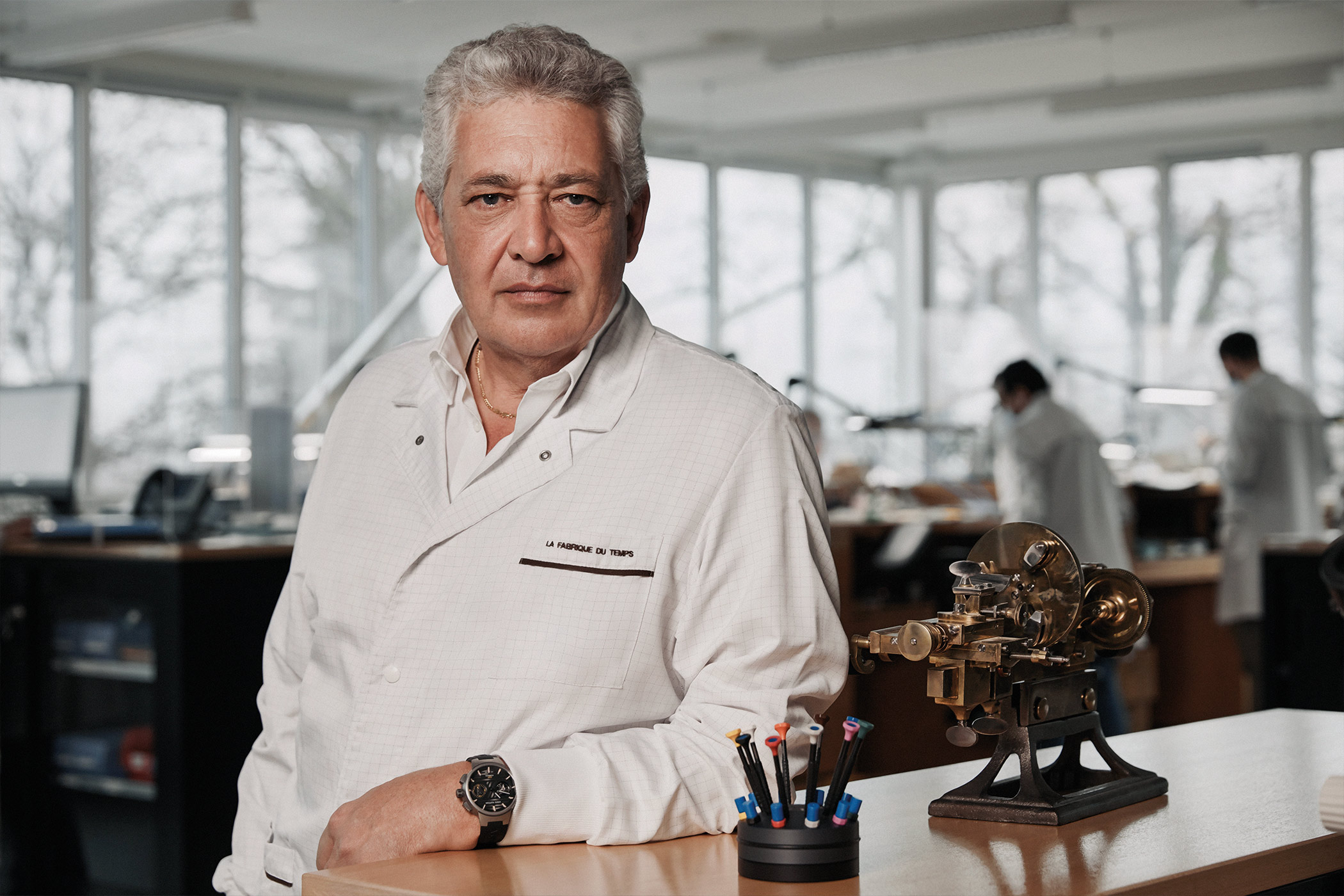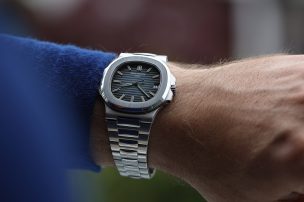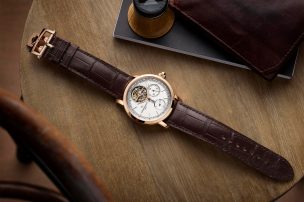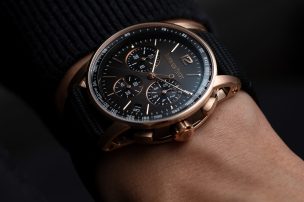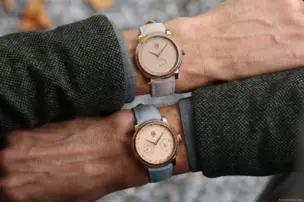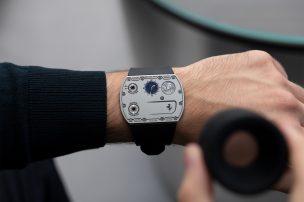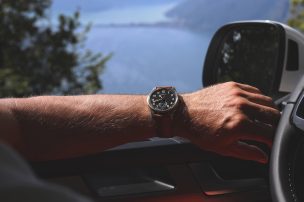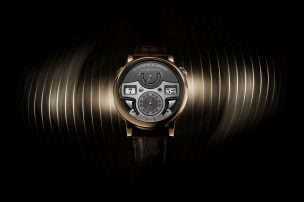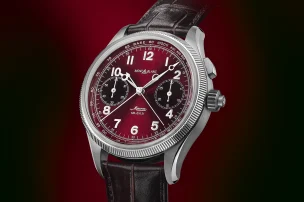

LVMH Watch Week: Talking Strategy With The CEOs
The fifth LVMH Watch Week, which took place in Miami from January 28 to February 1, was proof of LVMH’s ambition to become ever more influential in the watch sector, in which it is now the fourth largest power after Rolex, Richemont and the Swatch Group. To this end, the family-owned business is gearing up for a veritable watch offensive. Bernard Arnault sent two of his five children to Miami: Frédéric Arnault, now head of the LVMH watch division consisting of TAG Heuer, Hublot and Zenith, and his youngest son, Jean Arnault, director of Louis Vuitton’s watch department. The latter is the driving force behind the Louis Vuitton Watch Prize for Independent Creatives as well as the revitalisation of Daniel Roth and Gerald Genta, with which the 26-year-old intends to make his mark on watchmaking history.
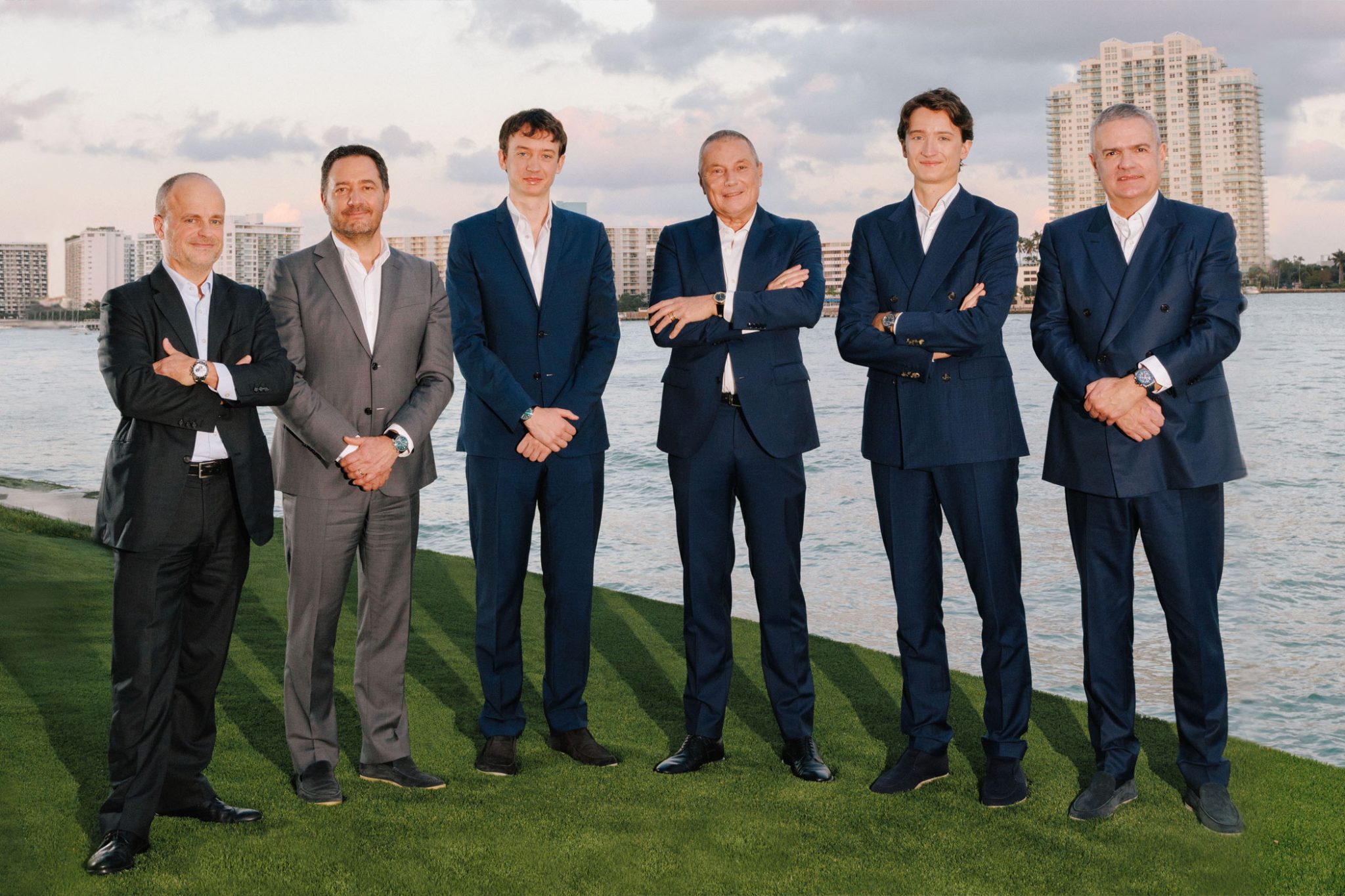
To get a grasp of LVMH’s strategy, we headed to Miami to speak with those who know best: the CEOs of LVMH watch brands TAG Heuer, Zenith, and Hublot, as well as the founders of La Fabrique du Temps, the in-house watch manufacture that has breathed new life into the Daniel Roth and Gerald Genta brands.
Julien Tornare on TAG Heuer
First up, we meet Julien Tornare, the man who brought Zenith back to life with his flair for storytelling, and that’s how he presents himself to us: as a storyteller with the aura of an entrepreneur. Even in day-to-day business, the CEO tells us, much is left to his ‘entrepreneurial spirit’, which the boss, Bernard Arnault, also honours and encourages wherever possible. But in reality, everything is planned down to the smallest detail with true LVMH precision and nothing is left to chance – as is to be expected from a group that has over 70 brands in its portfolio. The primary aim is to start reorganising TAG Heuer as a high-end watch brand. This also reveals that Tornare has a certain sympathy for haute horlogerie, which is probably due to his more than 17-year career at one of the oldest watch brands, Vacheron Constantin. This repositioning is to be achieved primarily through a greater depth of finishing and a newer, more ergonomic design. However, he also emphasised that the company wanted to design new movements. Almost contrary to this, TAG Heuer also wants to consolidate the Connected Watches, which were introduced in 2015, as a real cornerstone of the brand. In addition to the further development of the apps, which can help with the likes of optimising one’s golf game, digital ‘watch faces’ showcasing a guilloché aesthetic are also now in the works.
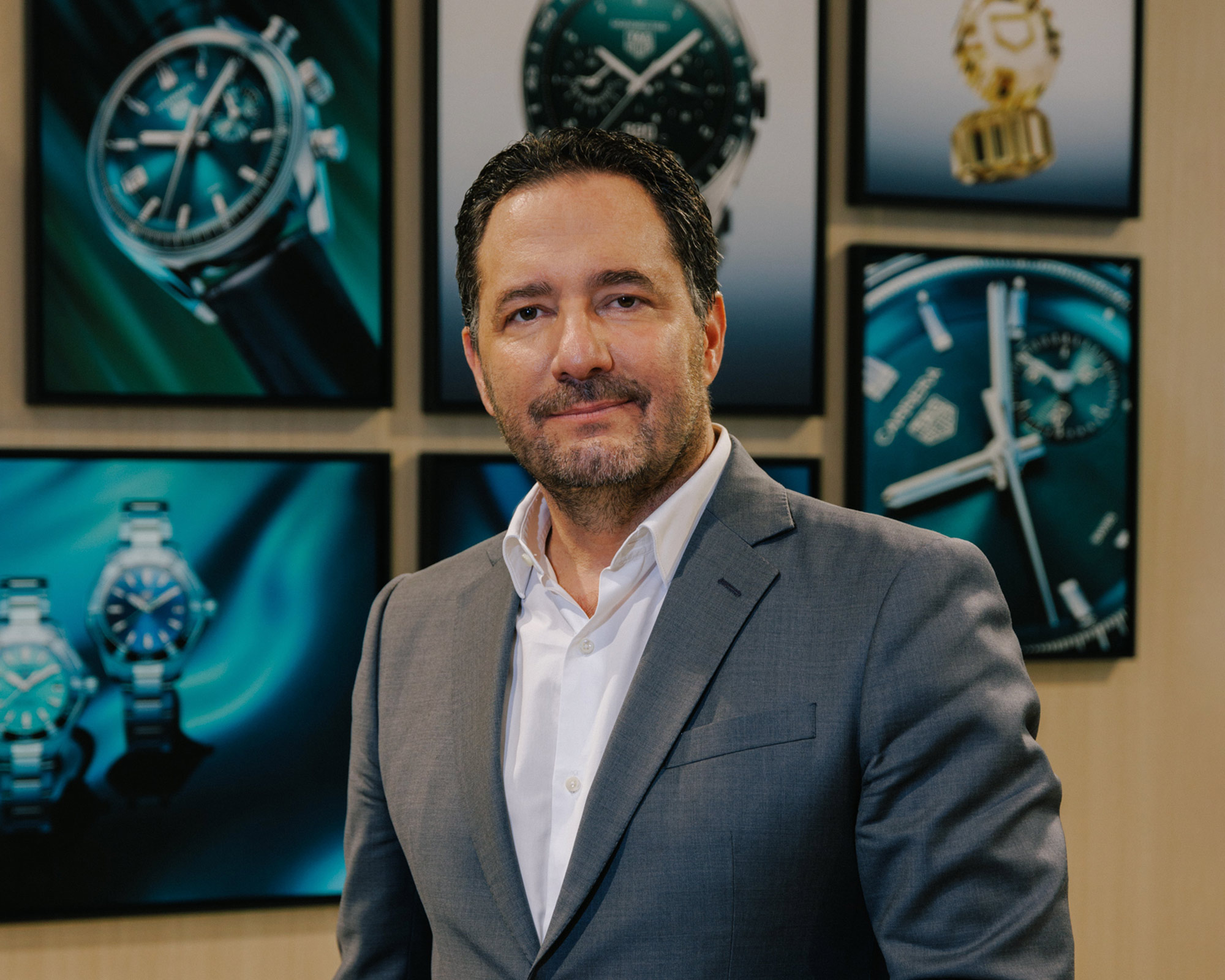
The third strategy is to further strengthen the retailer network and the more than 300 boutiques that TAG Heuer currently has internationally, while reducing the currently ‘too large’ distribution to 2,000 locations. To this end, the company wants to concentrate on the retail partners who ‘understand’ the brand best. Last but not least, the desirability of the brand, which has historically been stronger in the USA, is to be rekindled elsewhere, particularly in China. By involving ambassadors such as Ryan Gosling, collaborating with other brands and organising various events, the aim is to improve brand visibility.
One thing is clear: thanks to his experience with Zenith and more than 24 years in the watch industry, Julien Tornare knows how to revitalise a brand and how to tell the right story. It is also clear that the TAG Heuer brand has potential, precisely because it has a strong history and because it has already developed a unique and recognisable design language. However, Tornare is faced with two different starting points. In contrast to Zenith, TAG Heuer is positioned with a broad product range. It will therefore be exciting to see how well he masters the balancing act between his intended redirection of TAG Heuer as a high-end watch brand, the expansion of connected watches and, most recently, sunglasses. Julien Tornare’s era could therefore become a decisive chapter in TAG Heuer history.
LVMH Watch Week: Benoît de Clerck on Zenith
While Zenith has lost a strong manager and marketing expert in Julien Tornare, the brand is gaining a likeable and inquisitive industry expert with over 25 years of experience in the watch industry in new CEO Benoît de Clerck. De Clerck, who began his career in the tobacco industry and spent most of it with the Richemont Group, will be tasked with continuing what Tornare has built up over the years.

During our interview with Benoît de Clerck, who has been in office for just four weeks at this point, we meet a man who, like Julien Tornare, exudes great enthusiasm for his brand and is not afraid to say what he thinks. He begins by courteously recounting what his predecessor achieved, but quickly moves on to what he wants to create. “Zenith was a sleeping beauty, and Julien Tornare managed to awaken the brand. My job is to take Zenith to the second stage.” The strategy he will implement to reach this second stage is actually to follow the same line and function that Tornare has already demonstrated. Of course, he wants to change things, optimise them and add his own touch, but he emphasises that he does not want to change “what makes Zenith what it is”. Rather, his vision is “to continue what has already been started.”

Zenith has some important milestones coming up in the near future, which de Clerck attaches great importance to. One such milestone is the 160th anniversary of the Zenith brand, which is to be honoured with one or more anniversary models. Another point that the CEO wants to tackle is the price-performance ratio of his watches, which is already pretty good, but is nevertheless to be improved even further. However, he does not see the need to introduce new product lines at the moment – but let’s remember, it is only the 26th day in his new position at this point in time. Zenith is unlikely to change too much too soon – but our feeling is that there could be a much more sales-orientated future in store for the brand.
Michel Navas & Enrico Barbasini on Gerald Genta & Daniel Roth
LVMH Watch Week is not only characterised by a change of leadership among the brands, but also by two revivals. Through the creative power of three men, Jean Arnault (the youngest offspring of the Arnault dynasty), Michel Navas and Enrico Barbasini (the founders of La Fabrique du Temps), a new dawn awaits the Gerald Genta & Daniel Roth brands. From now on, the brands’ watches will once again be produced under one roof, but divided into two different workshops in order to “preserve the DNA of both brands”. We spoke to the two founders who are taking over the watchmaking management of the brands.
First up: Daniel Roth
Daniel Roth is considered a pioneer of independent watchmaking, having founded his eponymous brand in 1988 after playing a crucial role in the revitalisation of the Swiss horology house Breguet. In order to finance future developments, such as the series production of the tourbillon, Roth issued a Souscription series of 25 pieces for the London distributor William Asprey, which has become an emblematic model thanks to its unique aesthetic. It is therefore hardly surprising that Roth’s flagship model, the Tourbillon Souscription, has now been chosen by LVMH to herald the news that the brand of yesteryear, Daniel Roth, has been brought back to life.
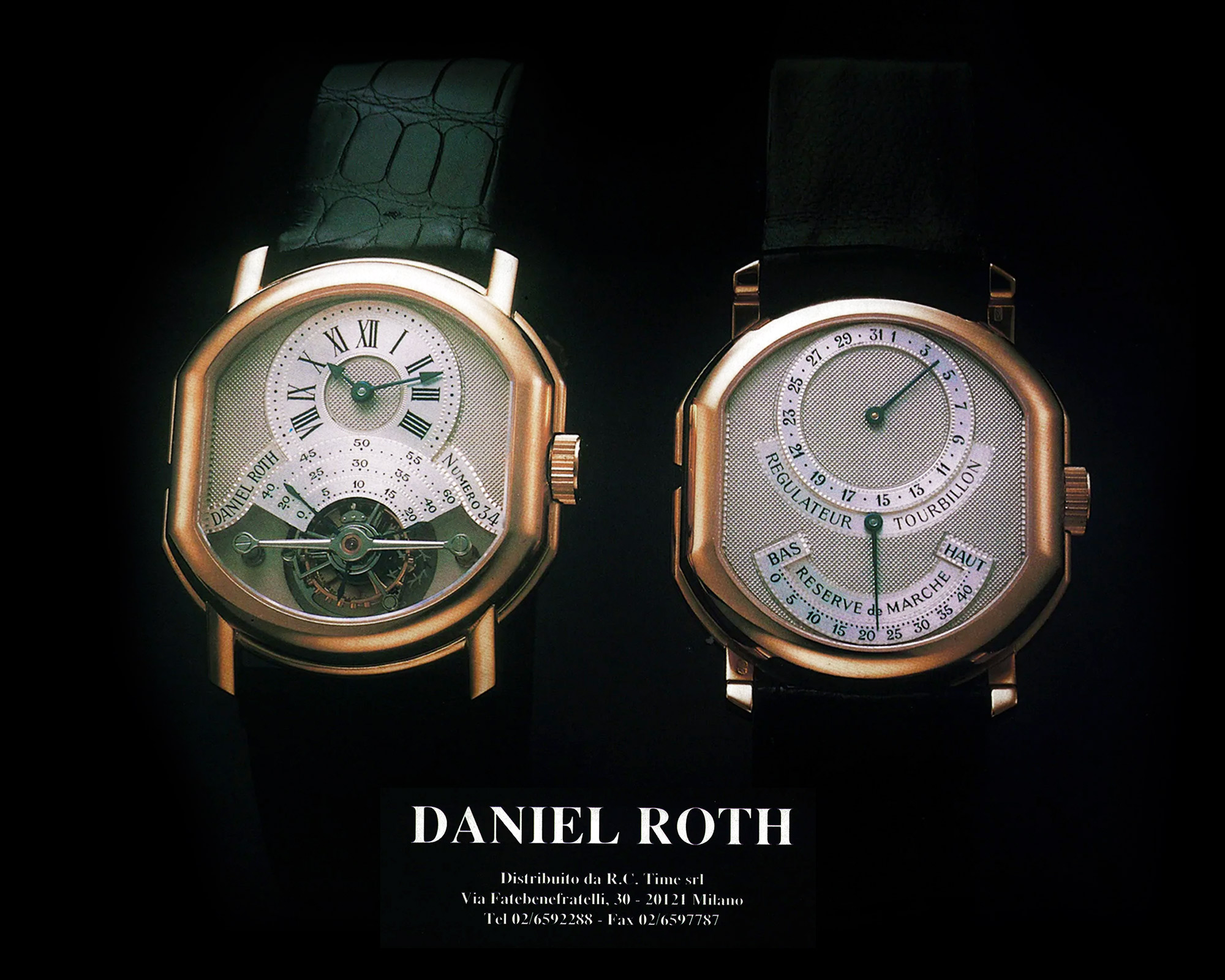
Michel Navas and Enrico Barbasini describe the first prototype of the Tourbillon Souscription, which we take a closer look at for ourselves during our meeting, as the following: “Everything has changed, and yet nothing has changed.” In the case of the Tourbillon Souscription, this alludes to the fact that the stylistic codes of the original model, which were primarily inspired by Abraham-Louis-Breguet, have been retained, but the DR001 movement ticking inside is completely different. The case of this new edition has also been (albeit minimally) modified. For example, the ergonomics of the horns have been optimised, and the case height reduced.
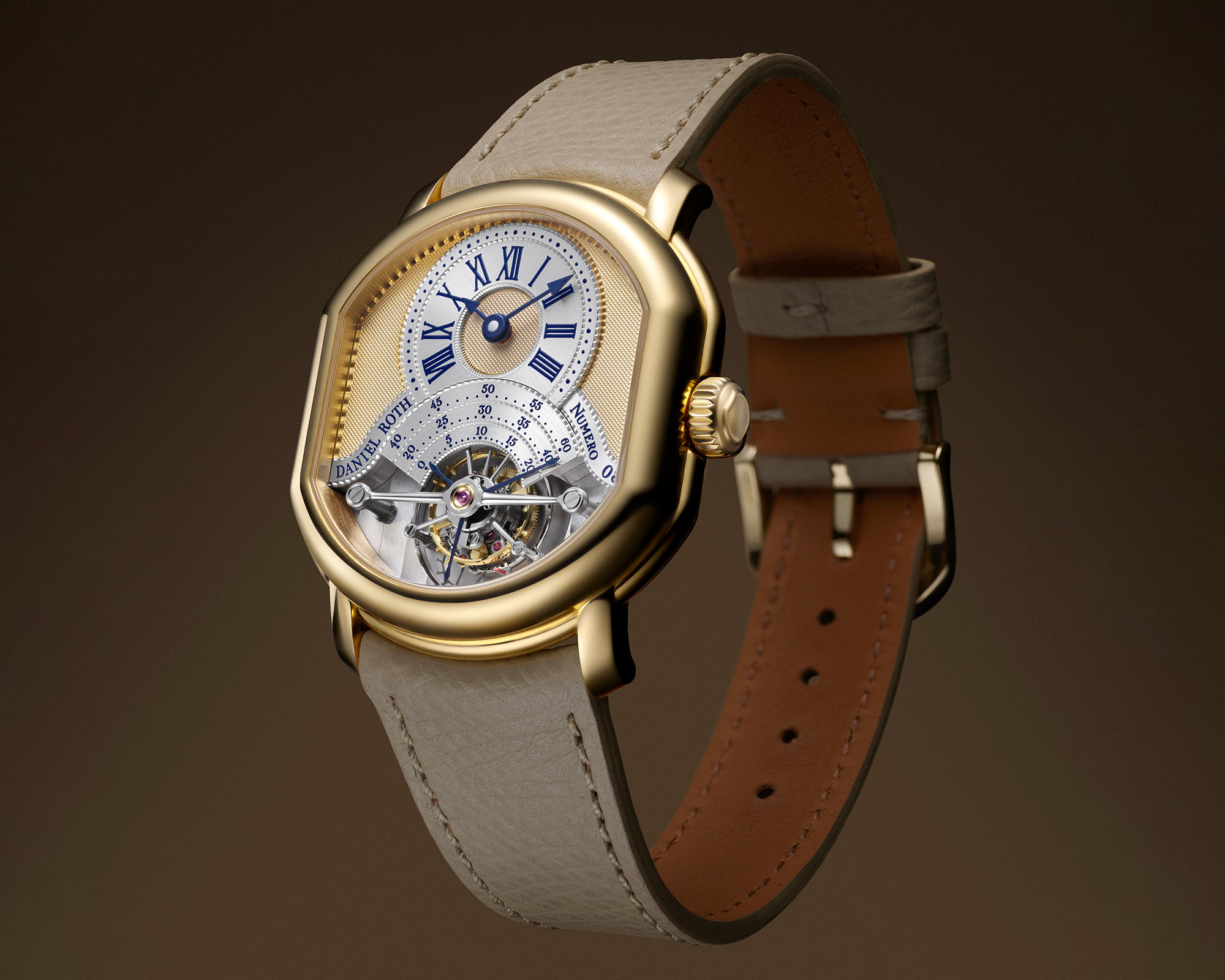
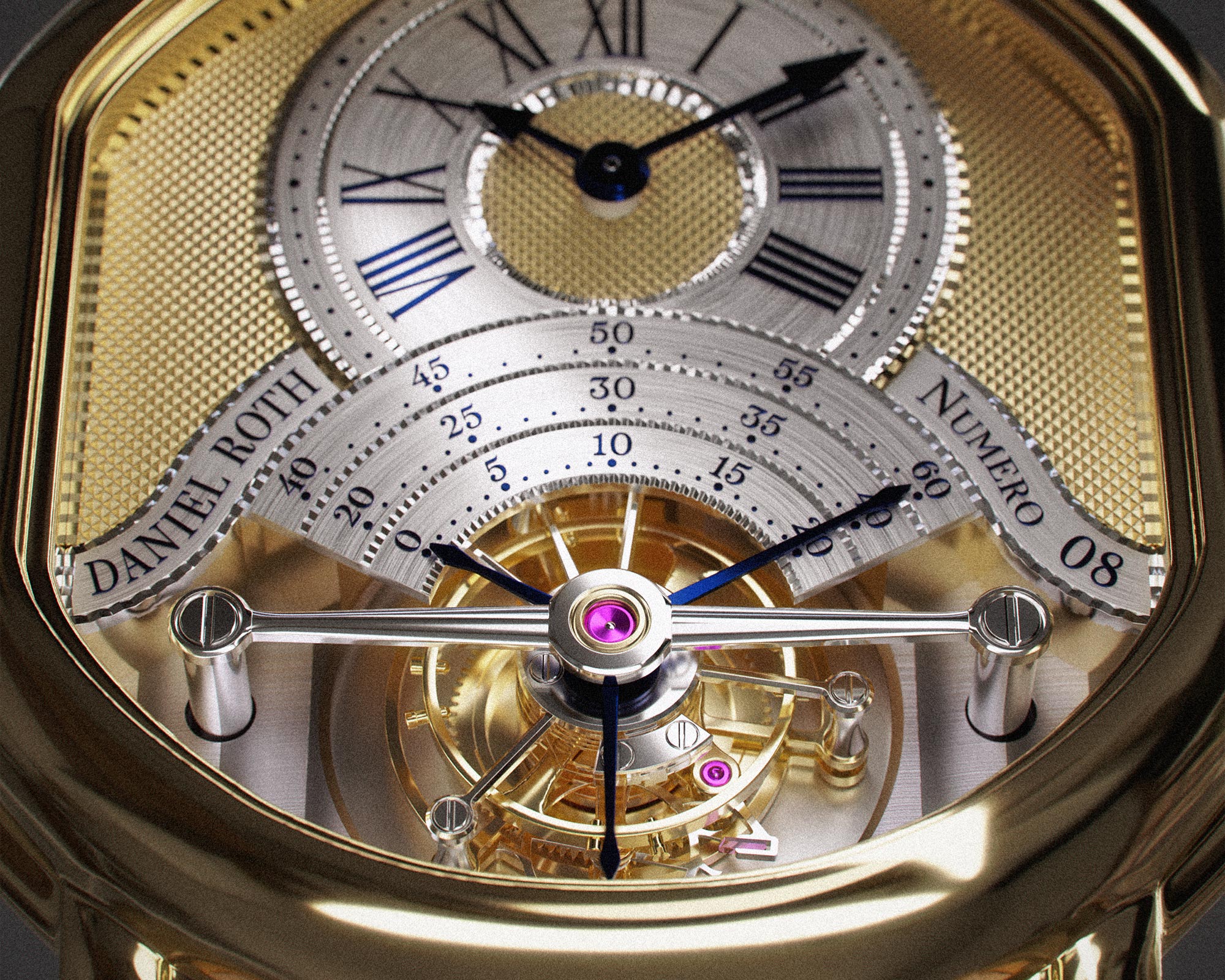
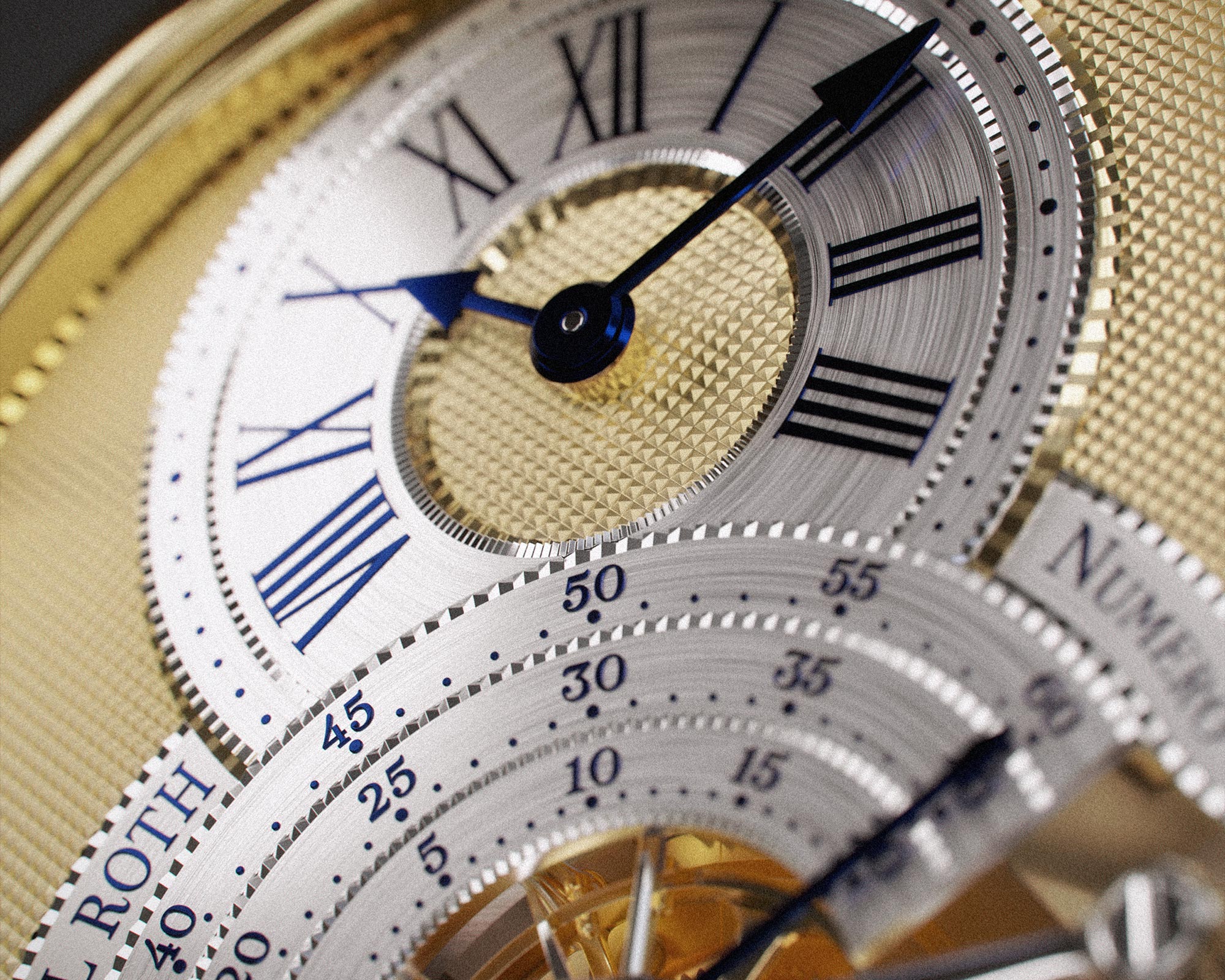
The two men emphasise that they want to put all their experience at the service of Daniel Roth in order to build on the magic of the brand’s origins. The plan, according to Navas and Barbasini, is to introduce further complications to the Daniel Roth collection in the future. “I adore the next one!” enthuses a euphoric Navas.
Next in line: Gerald Genta
Reviving the Gerald Genta brand is a strategically smart move in that Michel Navas and Enrico Barbasini, who have run La Fabrique du Temps since it was founded in 2014, worked with Genta himself in the 1980s and 1990s. Like TAG Heuer and Zenith, Gerald Genta has a wealth of history and, more importantly, hundreds of design blueprints that have never been realised.
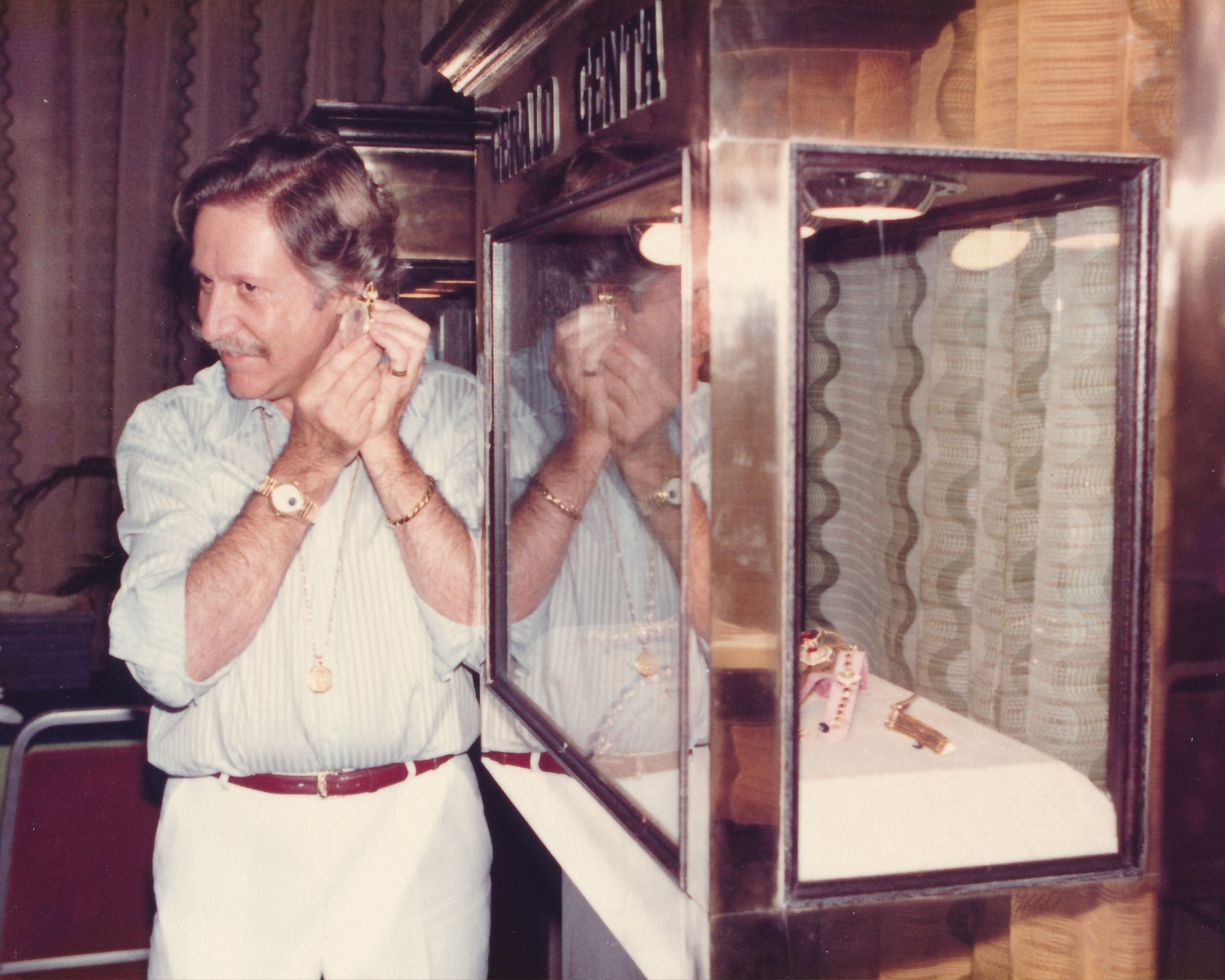
Gerald Genta listens to a minute repeater, his favourite complication
Its renaissance is to take place with the help of the watch designer’s widow, Evelyne Genta, who granted LVMH unrestricted access to the archives. During our conversation, the two founders mentioned their intention to continue to root themselves in the archives when creating new watches and present models that pick up on the design codes of a Genta watch, yet also go beyond them.
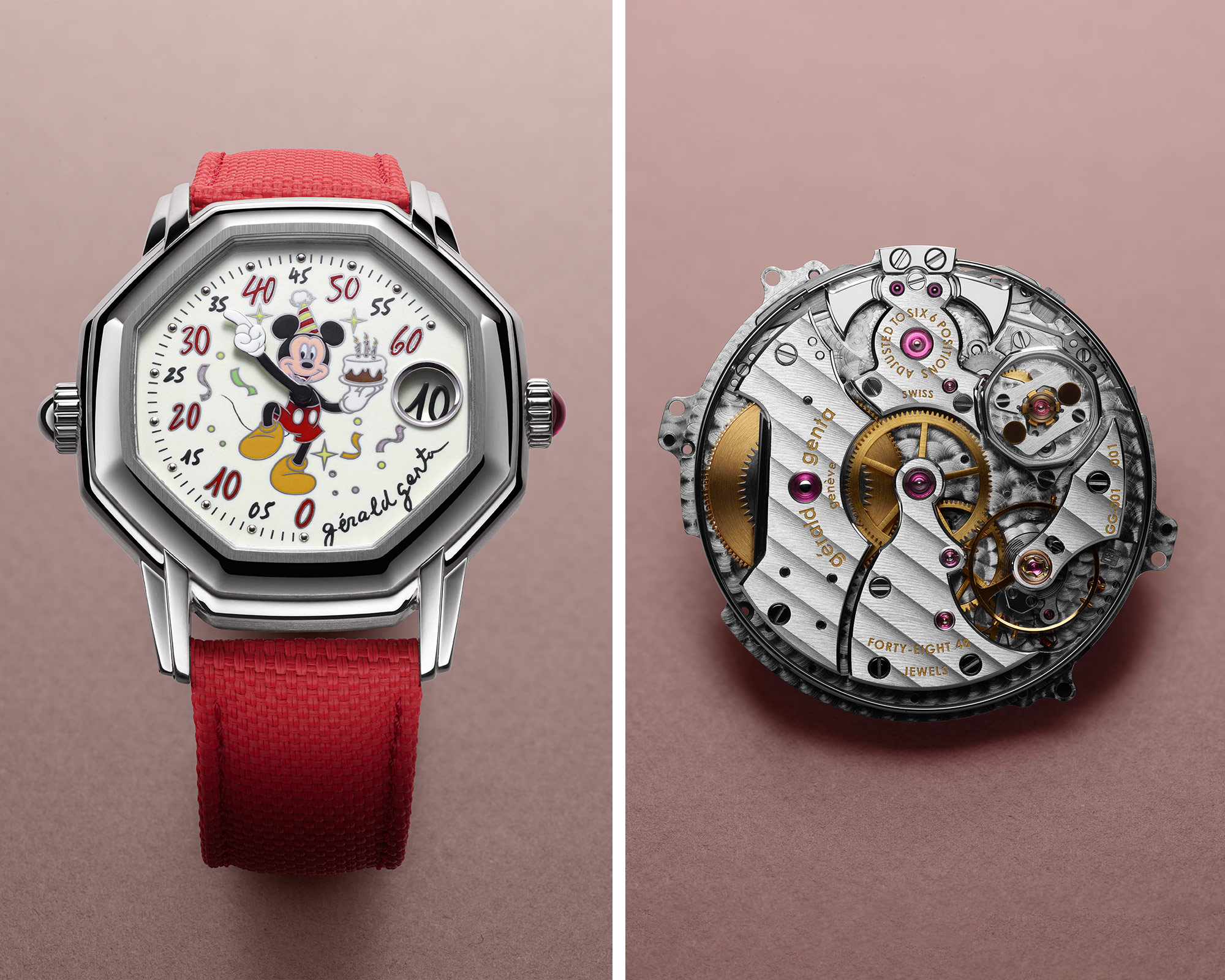
Ricardo Guadalupe on Hublot
During our meeting with Hublot’s CEO Ricardo Guadalupe, it quickly becomes clear that the CEO is proud of his brand and the watches he has created. For him, he explains, Hublot watches are not a commodity, but a work of art. What this philosophy means for the brand can be seen in the many partnerships that Hublot has recently entered into. From fashion designer Samuel Ross to Nespresso and sculptor Richard Orlinski, the inspiration has always been art. But behind this also lies the endeavour to create even greater exclusivity in order to clearly stand out from the competition.

At the same time, the CEO emphasises that he wants to continue to focus on limited editions that position the brand in the upper price segment. Hublot would certainly like to play in the league of Audemars Piguet, Vacheron Constantin, or even Richard Mille – the high level of limitation could also justify higher prices. Guadalupe wants to appeal to a younger target group of 30 to 45-year-olds in particular. Finally, he predicts further growth for the watch industry and therefore also for Hublot, as he believes that in a world where everyone has the same smartphone, it is increasingly desirable to have an exceptional watch on your wrist.


